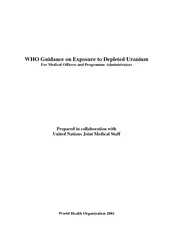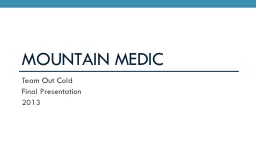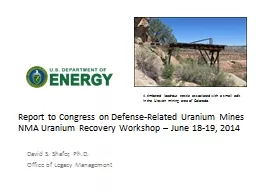PDF-WHO Guidance on Exposure to Depleted Uranium For Medic
Author : lindy-dunigan | Published Date : 2015-05-27
Concerns have been particularly for peacekeeping forces humanitarian workers and local populations living and working in areas contaminated by DU following conflict
Presentation Embed Code
Download Presentation
Download Presentation The PPT/PDF document "WHO Guidance on Exposure to Depleted Ura..." is the property of its rightful owner. Permission is granted to download and print the materials on this website for personal, non-commercial use only, and to display it on your personal computer provided you do not modify the materials and that you retain all copyright notices contained in the materials. By downloading content from our website, you accept the terms of this agreement.
WHO Guidance on Exposure to Depleted Uranium For Medic: Transcript
Download Rules Of Document
"WHO Guidance on Exposure to Depleted Uranium For Medic"The content belongs to its owner. You may download and print it for personal use, without modification, and keep all copyright notices. By downloading, you agree to these terms.
Related Documents














